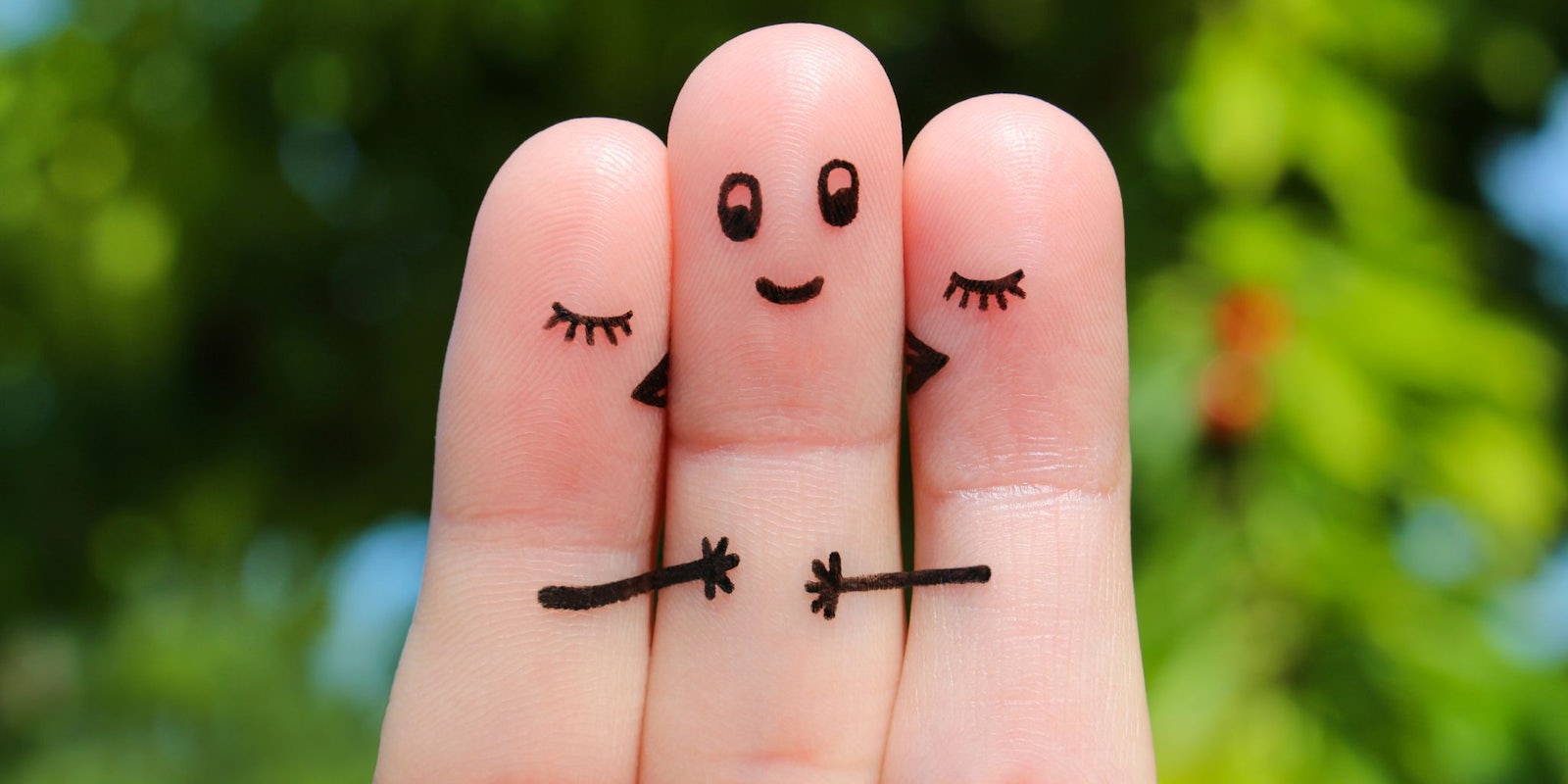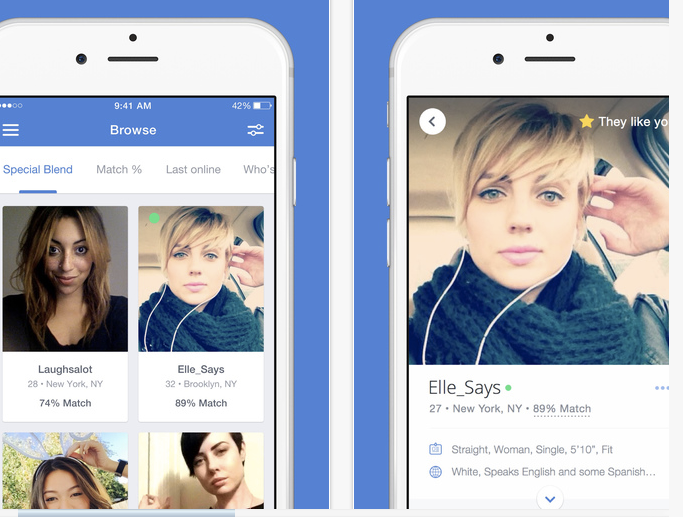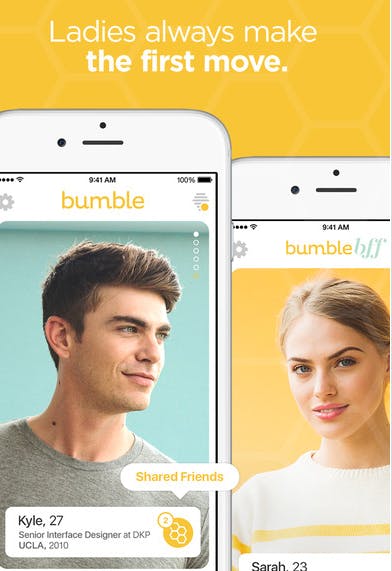It’s a good time to be non-monogamous or polyamorous. Or at least, it’s a better time to be non-monogamous than it used to be. Not only are alternative approaches to relationships getting more attention, there’s also a plethora of technologies to enable them.
But before we break down which dating apps may be best for your open relationship needs, let’s pause and define what non-monogamy and polyamory mean. Generally speaking, both terms refer to an approach to dating and relationships where you pursue multiple romantic and/or sexual relationships at the same time, with the knowledge and consent of everyone involved. But the nature of each of those relationships varies from person to person. Sometimes more than two people might pursue a relationship together; other times, someone may prefer to have multiple two-person relationships of varying levels of commitment and intimacy. There’s no limit to the types of non-monogamy out there.
As a woman in an open relationship, I use OKCupid and Tinder the most. But I also talked with some of my friends in the polyamory community (who subscribe to various forms of open relationships, but who are mostly all straight) to get their opinions and experiences using various dating apps.
The best dating apps for polyamorous dating
OKCupid
Pros:
- Majority of users are non-monogamous
- You can filter by people who are non-monogamous.
- You can get to know people through questions.
- You can message anyone.
- Longer profiles
- Queer-friendly
Cons:
- Anyone can message you.
- The odds are good, but the goods are odd.
I could probably write an entire article on the promise and peril of OKCupid alone. Suffice it to say, I think the selection of potential matches on OKC is better now than it used to be, and certainly better if you happen to live in a major U.S. city, than, say, rural Ohio. I’ve found the people I’ve met through the app to generally be more experienced in non-monogamy, very articulate, and great conversationalists—perhaps because on OKC it’s weird to see a profile that’s less than 300-words-long. That said, the people I meet on OKC tend to be a bit more on the nerdy side, but, hey, your experiences may vary.
OKCupid also offers a number of features for poly couples, such as the ability to link to their profiles. Additionally, as of this year, the majority of OKCupid’s user base is non-monogamous, according to the Atlantic.
“I like to dig into people’s profiles. I like to read people’s questions, and I find them really fascinating,” a 29-year-old designer told me, showing that non-monogamous dating isn’t all the sexy stuff. He said he’s been practicing non-monogamy for about a year, which initially started when opened up a previously monogamous relationship. He uses several dating apps, but OKC is his favorite. Interestingly, he told me that he doesn’t actually list himself as non-monogamous on the website, but finds most women he matches with are nonetheless open to the idea.
Tinder
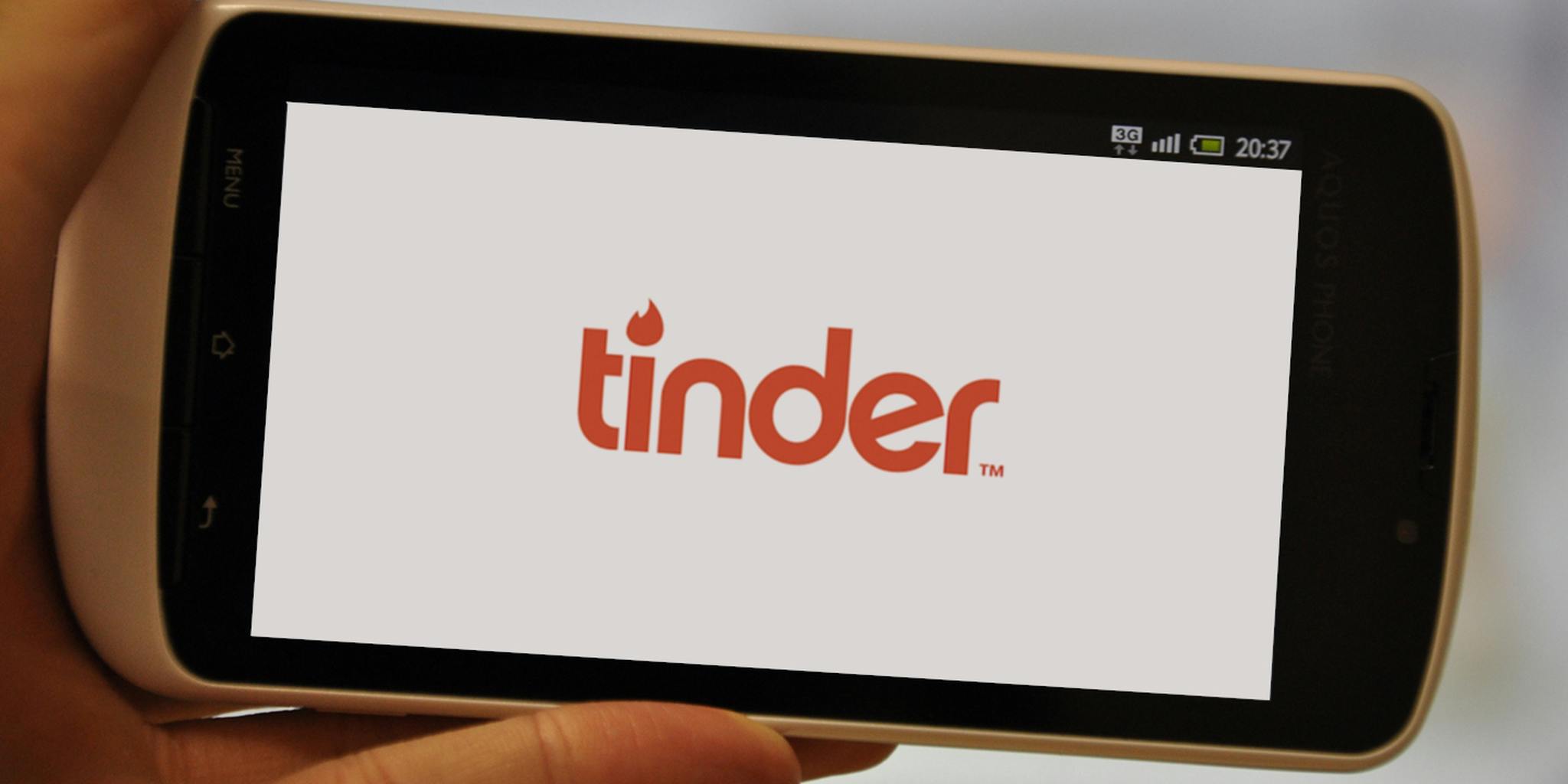
Pros:
- More people (probably?)
- Swiping is fun.
- You can only message people you match with.
Cons:
- More heteronormative
- Can’t filter for non-monogamous people
- So many robots
- Shorter profiles
- Adheres to the gender binary
When I first was trying out non-monogamy, I exclusively used Tinder—and it worked for me. I’ve gone on a lot of dates, and most of the ones that have stuck around were Tinder matches. While OKCupid might leave you with a little too much profile information to mull over, Tinder is much more to the point.
My left-swipe rules are pretty arbitrary, admittedly. Spelling error in your profile? Next. “No drama”? No thanks. Fish photo? Byeeeee.
But for all the little hints someone may intentionally or unintentionally leave that would turn you away, there is also a weird, secret language on Tinder that can help lead you to the right person.
Some people will just come right out and say that they’re poly. Occasionally, you might even come across a couple’s profile. But there are other, more coded signals. Terms like “GGG,” which stands for “good, giving, game.” Again, this refers more to how someone approaches the bedroom, but it’s also a term coined by Dan Savage, the writer of the “Savage Love” column, who frequently espouses the virtues of non-monogamy.
My primary partner also used to list that he was in an open relationship in his profile, and included a selfie of the two of us. But he found his matches went way, way, down. Now his strategy is to not mention it at all—sometimes even waiting until during or after the first date to reveal his relationship status. So far, it’s been working. Like-minded people tend to be drawn to one another, so he’s probably not going to attract anyone who is staunchly monogamous.
Another tip I’ve heard from multiple people is that if someone on Tinder is friends with your non-monogamous friends on Facebook, there’s a good chance they may be interested in what you have to offer.
Bumble
Pros:
- For straight matches, only the woman can initiate contact.
- You have 24 hours to initiate contact, they have 24 hours to respond.
- Hot people to the front
Cons:
- Can’t specifically select non-monogamous
- Not very queer-friendly
I’ve never tried Bumble, but I’ve heard good things. Apparently, the first people you’re shown are some of the hottest, so it might be worth a download just to ogle the cute people nearest you.
Like Tinder, Bumble uses a swiping mechanic to help you sort your matches. Once a match is made, only the woman can initiate contact if the couple is straight (though either member of a same-sex match can initiate). No matter what, you only have 24 hours to start talking and reply to someone’s message or you lose the match—a feature which Bumble’s CEO says cuts down on ghosting.
A 30-year-old nursing student new to non-monogamy told me she exclusively uses Bumble. She was using it before entering a non-monogamous relationship and found both her partners through the app. “The biggest difference is I don’t automatically pass on someone that says they are non-monogamous/poly outright,” she told me over Facebook messenger.
Another friend said she uses pretty much the same approach as she does with Tinder. She looks for little signifiers in emoji: two girls holding hands, a rainbow, a unicorn.
READ MORE:
- A beginner’s guide to sexting
- Breaking down the difference between gender identity and sex
- 5 dating apps for queer women without any of the bulls**t
Feeld
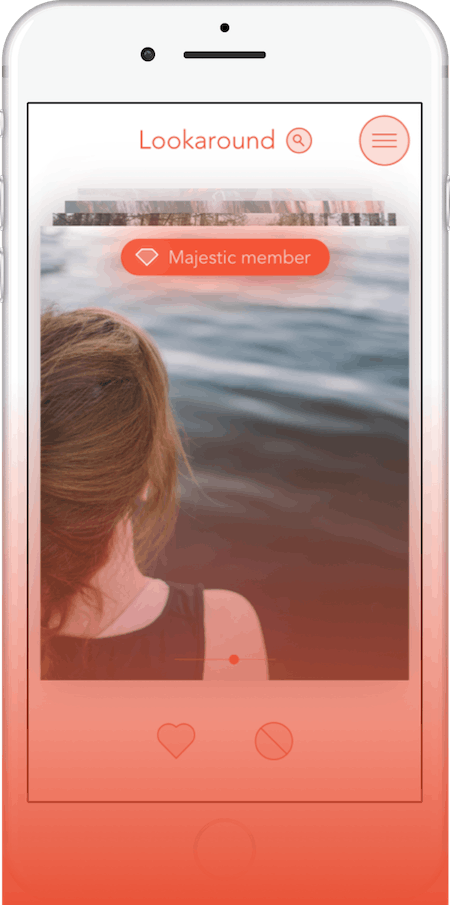
Pros:
- Designed specifically for groups
- Great for couples or single women looking for a couple
Cons:
- Mostly hookups-based
- Not great for single straight men
This is another app I’ve never tried, but I know many who have. It’s not so much for finding new relationships as it is for finding group sex. But hey, that’s certainly part of the non-monogamous lifestyle for some (but not all)!
According to Steve Dean, a dating consultant who specializes in non-monogamous date coaching, Feeld is great for single women and couples, but not so great for single men. As far as straight couples go, finding a third generally sways toward looking for another woman instead of another man for about a bazillion reasons we can’t totally get into here. But just know there’s a stigma against single men in this scene. Dean’s advice for single guys on Feeld? “Abandon all hope ye who enter here.”
Ouch.
There’s a lot more niche dating apps out there. But the most important thing to finding the perfect one for you is the most obvious: To have a lot of options, you need an app that’s going to have the highest number of “your type,” whatever your type is—it’s just a matter how much work you’re willing to do to find your people.

